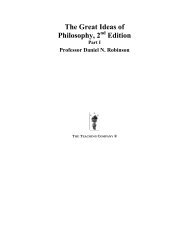English idioms in the first language and second language lexicon: a ...
English idioms in the first language and second language lexicon: a ...
English idioms in the first language and second language lexicon: a ...
Create successful ePaper yourself
Turn your PDF publications into a flip-book with our unique Google optimized e-Paper software.
350 <strong>English</strong> <strong>idioms</strong> <strong>in</strong> <strong>the</strong> L1 <strong>and</strong> L2 <strong>lexicon</strong><strong>idioms</strong> (see Bybee, 1985; 1988; 1995a; 1995b). Additionally, <strong>the</strong> DIRModel postulates that <strong>the</strong> representation of <strong>idioms</strong> via constituentor idiom entries is variable, which means that <strong>the</strong> representationscan change through time. This implies that <strong>the</strong> <strong>lexicon</strong> should beregarded as a dynamically organized structure <strong>and</strong> not as a staticlist, as generative approaches usually assume.V Summary <strong>and</strong> conclusionsOn <strong>the</strong> whole, <strong>the</strong> present study conducted with nonnative speakersof <strong>English</strong> confirmed <strong>the</strong> results for native speakers reported byTitone <strong>and</strong> Conn<strong>in</strong>e (1994), although some systematic differencesbetween <strong>the</strong> two groups were identified. Exist<strong>in</strong>g hypo<strong>the</strong>ses ofidiom process<strong>in</strong>g are not extensive enough to cover <strong>the</strong>requirements of idiom representation, especially with regard to <strong>the</strong>role of concepts <strong>and</strong> <strong>the</strong> <strong>in</strong>tegration of <strong>the</strong> L1 <strong>and</strong> <strong>the</strong> L2 <strong>lexicon</strong>.The DIR Model was developed to provide <strong>the</strong>se requirements. Thecentral assumptions <strong>and</strong> advantages of <strong>the</strong> DIR Model can bestated as follows: First, <strong>the</strong> model considers not only a lexical, butalso a conceptual level of representation. Secondly, at <strong>the</strong> lexicallevel <strong>the</strong> duality refers to <strong>the</strong> parallel existence of both constituent<strong>and</strong> idiom entries. The development of an idiom entry depends on<strong>the</strong> idiom’s decomposability – nondecomposable <strong>idioms</strong> def<strong>in</strong>itelyneed an idiom entry – <strong>and</strong> its frequency. The more frequent anidiom, <strong>the</strong> more likely it will develop an idiom entry.One of <strong>the</strong> DIR Model’s advantages is its compatibility withregard to <strong>the</strong> L1 <strong>and</strong> <strong>the</strong> L2 <strong>lexicon</strong>. The differences between <strong>the</strong>native <strong>and</strong> <strong>the</strong> nonnative <strong>lexicon</strong>, which are ma<strong>in</strong>ly due todifferences <strong>in</strong> <strong>the</strong> frequency of exposure to idiomatic configurations,can be described <strong>and</strong> expla<strong>in</strong>ed by gradual variation of<strong>the</strong> same <strong>the</strong>oretical assumptions. For decomposable <strong>idioms</strong>, idiomentries should be regarded as additional pieces of <strong>in</strong>formationabout frequently-occurr<strong>in</strong>g l<strong>in</strong>guistic entities <strong>and</strong> not as am<strong>and</strong>atory prerequisite to idiom process<strong>in</strong>g.The claim of dual representations qualifies <strong>the</strong> special status thathas been attributed to <strong>idioms</strong> <strong>in</strong>, for example, generative models ofgrammar <strong>and</strong> which has been responsible for <strong>the</strong>ir treatment asexceptions. But, consider<strong>in</strong>g <strong>the</strong> abundance of <strong>idioms</strong> <strong>in</strong> <strong>language</strong>,it is not justifiable to treat <strong>the</strong>m as someth<strong>in</strong>g special. What isneeded is a representational model such as <strong>the</strong> one <strong>in</strong>troduced <strong>in</strong>this article that, on <strong>the</strong> basis of <strong>the</strong> same <strong>the</strong>oretical assumptions,is able to describe <strong>and</strong> expla<strong>in</strong> expressions located at various po<strong>in</strong>tson <strong>the</strong> cont<strong>in</strong>uum of compositionality <strong>and</strong> decomposability.Downloaded from http://slr.sagepub.com at Shanghai Jiaotong University on March 7, 2009














